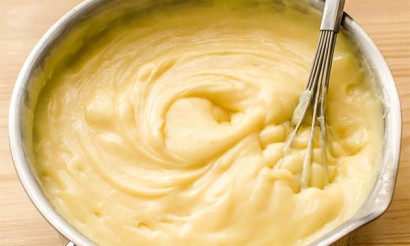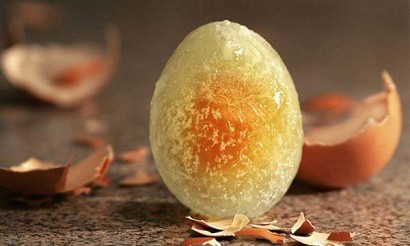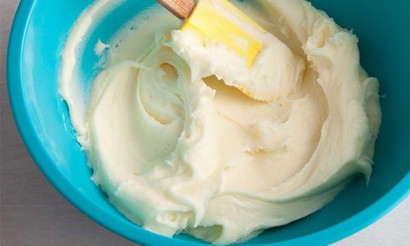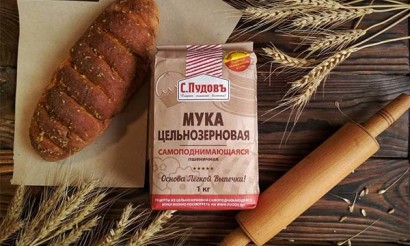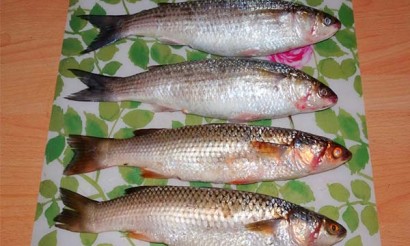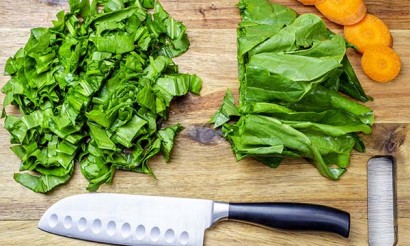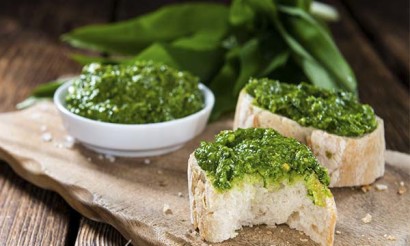Saffron and turmeric: are they the same thing?
- What is turmeric
- General Characteristics
- Where to use it
- What is saffron?
- Common Characteristics
- Where is saffron produced today?
- The difference between turmeric and saffron
- How not to make a mistake when buying saffron
- Can I substitute one for the other?
- Can saffron and turmeric be combined?
- Which is healthier: saffron or turmeric?
- Health Benefits of Turmeric
- Useful properties of saffron
The world of spices is a diverse one. But among the different shades of flavor and color, two spices particularly stand out: saffron and turmeric. Both spices have a long history. At different stages of the development of human civilization, they have decorated dishes and cured various diseases with their presence. These two spices have so much in common that many people who are unsophisticated in culinary subtleties believe that saffron and turmeric are two different names for the same product. Indeed, both spices have similarities in certain characteristics, but there are very significant differences between them. Let's consider how saffron differs from turmeric, what characteristics they have in common. To understand this difficult question, it is necessary to get better acquainted with each spice.
What is turmeric
Almost all popular spices come from Asian countries or regions with tropical and subtropical climates. Therefore, consumers from the Northern Hemisphere are unfamiliar with these exotic products. India is especially rich in the strange spices. It was here that the great traveler Marco Polo once discovered an amazing plant - yellow ginger or turmeric. He was fascinated by the taste and golden color of the spice, which in those early days the wealthy locals were already adding to their food. For its bright hue and spicy taste, turmeric is often called "Indian saffron. But from the perspective of botanical scientists, saffron and turmeric come from two very different crops.
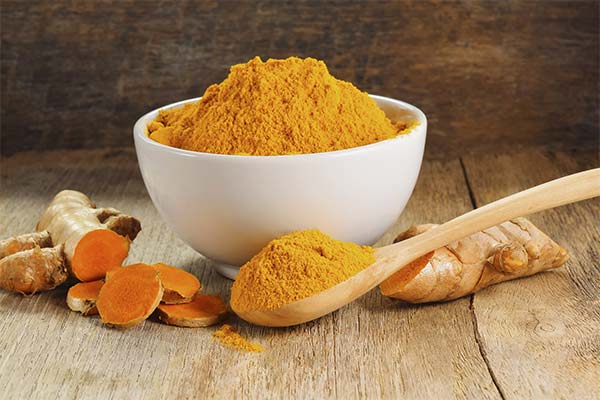
Common Characteristics
The spicy powder that every housewife is familiar with is derived from the root part of a perennial herbaceous plant belonging to the Ginger family. This rather numerous class has more than four dozen varieties, but only one kind of turmeric is used for the production of the spice - the Longiflorum variety.
The crop is common in the following regions of the planet:
- Asia;
- Central America;
- India.
The main supplier of the spice to the world market today is India, but turmeric is also grown in the following Asian countries:
- Indonesia;
- Vietnam;
- China;
- Japan;
- Cambodia.
Cultivated in the island nation of Sri Lanka and Madagascar.
The appearance of the perennial is very attractive, especially during the flowering period. On the background of long green leaves appear beautiful, fairly large inflorescences of bright colors - from snow-white to dark purple.
But the most valuable part of the plant is the roots. The underground part of turmeric looks like a ginger tuber (hence the name "yellow ginger"). The main root has offshoots that branch off to the side.
Two types of rhizomes are used to produce the spice:
- primary rounded;
- Secondary (cylindrical) shoots.
The second type of rhizomes is of higher quality because the young shoots contain less starch, but more coloring substances.
Interestingly, both fresh root and processed raw material are used as a spice, which comes to the market in the form of powdered concentrate.
The taste of turmeric combines warm tones with a noticeable peppery flavor. The flavor of the spice has hints of ginger and orange.
Area of application
Curcuma is in demand in many different industries:
- In the pharmaceutical industry, the spice is added to anti-inflammatory and expectorant medications.
- In cosmetology, the spice is included in rejuvenating creams, added to shampoos and lipstick for fragrance.
- The spicy notes of turmeric have found application in the perfume industry.
- In cooking, the Indian spice is used in almost all categories of dishes, including soft drinks, spirits and confections.
- In the food industry, spice powder is added to cheeses, some oils and margarines.
- In the light industry, turmeric is used as a natural dye for fabrics.
Note: Turmeric's valuable composition and affordable cost only benefit the rating of this versatile product.
What is saffron
Saffron has been considered the "king of spices" since antiquity. This high title the spice retains today. And such a status is awarded to the product not so much for its exclusive flavor qualities, but for the incredibly high cost of the product: only 1g of spice on the market costs on average 15 dollars. Therefore, only well-to-do people can afford such a spicy luxury, although even they buy only a few grams of spice for their personal needs.
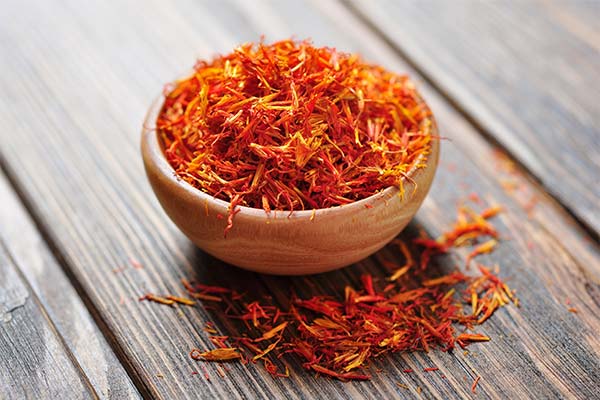
General characteristics
A unique spice is obtained from the flowers of saffron crocus. This perennial plant belongs to the Iris family and is the closest relative of the garden crocus.
The range of distribution of saffron crocus is limited to warm Asian countries. There are large plantations of the spice plant in China and Kashmir, it is cultivated in Portugal and Spain, as well as in the Caucasus.
Appearances
Crocus is impressive in its beautiful appearance especially during the flowering season, which falls in the fall each year.
Signs:
- The stem is no taller than 30 cm.
- Narrow leaves.
- 1 to 3 pale purple flowers from each bulb.
- The corolla of each flower has a pistil in which there are three bright orange stigmas up to 3.5 cm long.
It is these thin strands of stigmas that are of great value. They are used as a spice called saffron.
Production specialties
The process of gathering the sprouts is a very labor-intensive activity that requires patience and physical endurance. Mostly women are engaged in this business. First, the workers pluck the stigmas from each crocus flower by hand in the blazing sun. The collected material is dried immediately. Interestingly, to produce just 1 kilogram of saffron, it would take about 300,000 stigmas from about 300,000 flowers. Therefore, it is easy to understand why this spice is so expensive.
Flavor and aroma
Saffron is most valued in its darker shades of red and brown. Well-dried strands have a subtle and very persistent flavor. There is a pleasant bitterness in the flavor of the spice. Saffron easily shares its flavor and aroma with the dishes in which it is added. True, the shelf life of this spice is very short. Over time, the spice threads lose their rich hue and bright flavor.
The spheres of application of saffron because of the high cost of the product are limited. The spice is mainly used in European and Asian cuisine. It is enough to add just a few spicy threads to change the taste:
- Soups and broths.
- Meat dishes.
- Vegetable snacks and salads (saffron goes well with tomatoes, asparagus, cabbage).
- Garnishes of cereals (rice in a duet with the spice is especially delicious).
- Confectionery (muffins, pies and even cakes will be much tastier with the addition of saffron).
- Beverages.
- Sauces.
- Desserts.
The culinary characteristics of saffron are beyond competition. The spice not only has gastronomic qualities, but also has a very favorable effect on the body. Therefore, it is often used for therapeutic and preventive purposes.
Where is saffron produced today?
The main suppliers of the spice today are:
- Iraq. This country produces the cheapest spicy products, which are not of high quality.
- Spain supplies the market with extra-grade. The production uses the technique of drying raw materials in a special oven.
- India. This country grows the most valuable and expensive variety of saffron with a crimson-red hue.
From the brief description of turmeric and saffron, it is easy to understand that they have many similar qualities, but there are also differences.
The difference between turmeric and saffron
The first conclusion suggests itself: the main difference between the two spices is their cost. According to this indicator, saffron belongs to the class of elite spices, and turmeric is a budget product. But this is not the only distinguishing feature that is worth paying attention to. Let's list the parameters by which you can judge the difference:
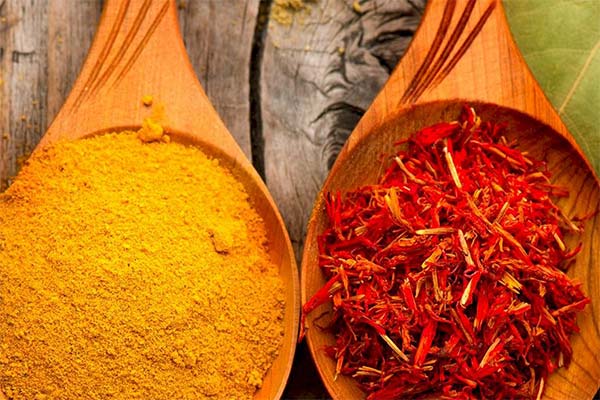
- The root part of the plant is used to obtain turmeric. Saffron is the stigmas of the crocus flower, which has a spicy taste and bright aroma.
- Turmeric is sold as a powdered concentrate, while saffron is the whole dried part of the flower.
- The color of turmeric is closer to an orange tone, while good quality saffron has dark red-brown or burgundy hues.
- The elegant flavor of saffron is hard to mistake for any other spice. This bouquet is full of delicate noble hues. The flavor of saffron is warm, with a bitter-spicy notes. Turmeric has a less rich flavor, in which the orange accents come through clearly. It is more of a burning flavor, but not bitter.
You only need to add 4-7 strands of saffron to satiate any dish, and a standard serving of turmeric for 4 servings is about 1-2 tsp.
Another significant difference is the amount of product that sellers offer to customers. Real saffron is very expensive, so it is sold by the gram (no more than 5 grams) by weight. Turmeric is considered an everyday spice, and its cost is suitable for any budget. This spice product is therefore bought in portions of 50 to 200 grams.
Similarities
Having highlighted the differences, it is worth listing similar characteristics. True, the list of coincidences is small. Saffron and turmeric are completely identical in the following properties:
- Give food a bright yellow hue.
- Have a powerful antioxidant activity.
- Neutralize salts of heavy metals.
- They are an effective preventative against cancer.
- Good for cleansing the intestines.
Both spices are contraindicated during pregnancy and while breastfeeding.
How not to make a mistake when buying saffron
Spices belong to the category of products, when choosing which buyers need to be especially careful. Unfortunately, unscrupulous traders very often resort to all kinds of tricks, wishing to earn more. Very often they go for fraud, trying to sell a fake instead of the expensive spice. Especially often, such cases occur with saffron. So, going to the market, you should arm yourself with some useful tips:

- Real quality saffron is never sold in powder form.
- The fibers of dried stigmas have small yellow flecks on a dark red background.
- The original product will instantly stain the skin if a thread of saffron is rubbed between the fingers.
- The expensive spice has a very bright, bitter aroma that is difficult to mistake for other smells.
- Saffron is sold in small sealed bags of a few grams.
- Price is the main guideline when choosing. If the seller offers to buy saffron for a fabulously low price, it means that it is a low-quality product or a fake.
You can make a test for the originality of the spicy product: natural saffron when placed in cold water will immediately color the liquid in an intense yellow shade. Just one spice strand is enough to perform this test. Corn or safflower stigmas, which very often spice merchants slip into the real saffron, will not stain the water.
An important point: Sellers often advertise their spice product as "saffron from India." There seems to be no deception in such an announcement, because high-grade crocus is grown in India. But we should not forget that turmeric is also often called "Indian saffron". This subtlety of terminology must always be taken into account.
Of course, it is easier to distinguish spices when they are presented to the buyer in their natural form, not in a processed product into powder. But for our domestic consumers this is impossible, because crocuses, from which saffron is derived, grow on the other side of the world.
Can one substitute for the other?
Masters of haute cuisine in general do not like to talk about the interchangeability of spices. Each spice has its own unique flavor and aroma. It can either enhance or spoil the flavor profile of any culinary masterpiece. Therefore, there is simply no complete analogue of both turmeric and saffron in nature. Of course, we cannot deny that in some cases it is quite acceptable to spice up a meat dish or chicken with turmeric instead of expensive saffron. Such a substitution will not spoil the meal, because turmeric is a universal spice.
You can substitute one spice for another in the following cases:
- To give specific flavor notes. When it comes to cooking Arabic or Moorish dishes, only saffron should be used. Examples include such exclusive dishes as Marseille soup or saffron sauce. In the tradition of Korean Indian and Vietnamese cuisine, however, most cooks use turmeric instead of saffron. In combination with ginger, turmeric can give the dish a pungent taste with a characteristic bitterness, although the subtle honey notes and aroma of fresh hay cannot be reproduced by this duo.
- To give the dish a beautiful hue. If you want to decorate the finished culinary masterpiece, it is not necessary to spend money on saffron, because turmeric can cope with this task.
For medicinal purposes, both spices are also used quite often. But make a substitution only for home therapy of inflammatory diseases caused by bacterial infection. In other cases, substitution is not allowed.
What other uses can spices be used for?
- Both saffron and turmeric can be used as coloring agents in pastries, cheeses, and drinks.
- Both spices are often used to color liquors and other alcoholic beverages.
- Both spices have antibacterial properties. Therefore, seasoned dishes will retain their freshness longer.
- In the preparation of everyday dishes, especially meat and vegetable dishes, you can safely replace expensive saffron with turmeric.
Attention: Although in some situations it is possible by replacing saffron with turmeric to imitate the flavor bouquet and aroma, a completely cheap seasoning will not be able to replicate the original product.
Can saffron be combined with turmeric
Under no circumstances should two Indian spices be combined in the same dish. Although the spices have a lot in common, they are essentially antagonists. If you do take the risk of combining the two spices in one bowl, you can expect the following negative consequences:
- An irrevocably spoiled dish, since both spices have a burnt taste.
- Lack of flavor, as one spice will simply "clog" the other when the batch is combined.
- Even with food coloring, the combined use of turmeric and saffron will have a negative effect on the taste of the dish.
These recommendations will help home cooks discover the characteristics of each spice, avoiding the undesirable effects that can result from the union of these two spices. Keep in mind that the main purpose of any spice is to change the taste of food. If the flavor and aroma abilities of spices can be skillfully manipulated, it is possible to make these additives "play" a new role in each dish you prepare. You can experiment by mixing them in different proportions with other spices. Although turmeric and saffron are considered incompatible companions, but you can try this method to find the perfect combination, which will surprise you with a pleasant result.
Which is healthier: saffron or turmeric
The healing properties of turmeric, as well as saffron, were actively used in ancient times. However, such a "medicine" at a cost equivalent to gold, so it was not available to everyone. If we examine the medicinal properties of each spice separately, we can see that in this area the two spices also have a lot in common.
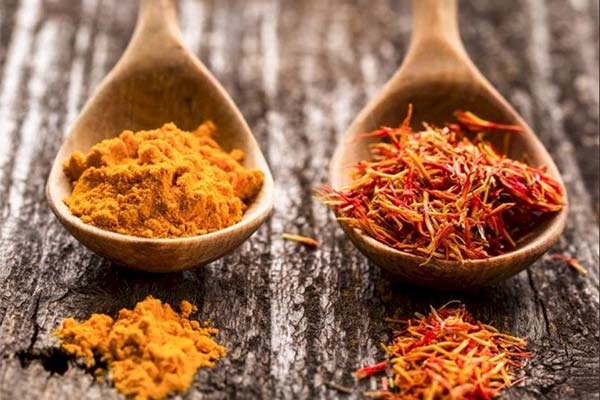
What are the health benefits of turmeric
All the valuable part of the plant, which is grown for the sake of obtaining a golden spice powder, is concentrated in the underground part. The composition of turmeric contains:
- A whole vitamin complex;
- many mineral elements;
- organic acids;
- essential oils;
- a lot of fiber.
But the main active component of this spice is the natural dye curcumin. Curcumin has been proven to have the unique ability to break down fat and inhibit aging. Turmeric also has the ability to:
- regulate metabolic processes;
- improve appetite;
- Increase blood pressure, which is useful for hypotensive people;
- detoxify tissues;
- fight inflammation;
- improve skin condition;
- prevent the development of cancer;
- stimulate digestion;
- Improve bile flow.
All these effects are widely used in traditional and folk medicine. Curcuma is often included in diets for weight loss, and for preventive purposes it is used to prevent arthritis and senile dementia.
Useful Properties of Saffron
The record of saffron is also quite extensive. In fact, in addition to its excellent culinary characteristics, the spicy threads of crocus in dried form are very highly valued in medicine for its rich composition, which includes:
- essential oils;
- waxes;
- carotenes;
- glycosides;
- vitamin groups;
- minerals.
In total, saffron has several dozen different components. That is why this spice has a great healing power. Even in ancient times, the first doctors noticed that saffron eliminates indigestion and generally has a beneficial effect on the secretion of gastric juice. It is also worth noting the following medicinal properties of the spice:
- antispasmodic;
- antibacterial;
- tonic;
- antioxidant;
- diaphoretic;
- sedative;
- antiviral;
- sleeping pills.
Small doses of, for example, saffron essential components are added to medicines. Adding the spice to the diet helps to normalize the cardiovascular system and stabilize blood composition. For colds and inflammatory processes, a few strands of saffron can bring down fever and relieve headaches. In addition to these purely therapeutic effects, saffron boosts mood and gives the skin a healthy complexion.
After studying the healing abilities of each of the spices, it is easy to see that in this area they also have a lot in common:
- For example, saffron and turmeric are used in modern medicine as natural hepatoprotectors, since both spicy products normalize liver function and help restore the structure of this organ.
- Both spices have powerful anti-inflammatory properties.
- They stimulate digestion and promote rapid digestion of food.
- In case of colds and flu, drinks with the addition of any of the two spices will help to bring down the temperature and improve the overall condition.
- Do not forget that these spices are natural aphrodisiacs. Therefore, a small addition to the diet will increase sexual desire, and also help to cope with some intimate problems.
- If you do not know what to do and what to do with it, you must remember that you cannot do it without a good reason.
- Curcuma and saffron are anti-carcinogenic because they neutralize free radicals, substances that cause cancer.
- Both spices energize and tone the body.
It is not by chance that after a long illness, if there are no contraindications, doctors recommend adding small portions of spices to the diet of weakened patients. Spices are very useful for intoxication, physical and mental exhaustion.
Conclusion
To summarize this review: although turmeric and saffron have a lot in common, these products are very different from each other. The potential of these two unique spices is enormous, which is why scientists are studying them closely. But even the researchers can't give an exact answer to the question: which spice is more useful for health. This can only be determined by each individual, based on the objectives for which he is going to use a particular spice product.
If finances allow, you can enjoy the amazing taste of oriental dishes flavored with real saffron. And in the case when you need to find a natural antiviral remedy - there is no better preparation than the "golden milk" with turmeric. Therefore, the solution to this question largely depends on both personal gastronomic preferences and on the possibilities of the purse.
«Important: All information on the site is provided solely for introductory purposes only. Before using any recommendations, you should consult with a specialist. specialist before using any of the recommendations. Neither the editors nor the authors shall be liable for any possible harm caused by materials."

